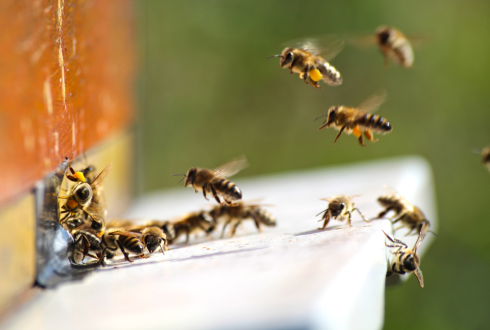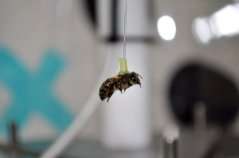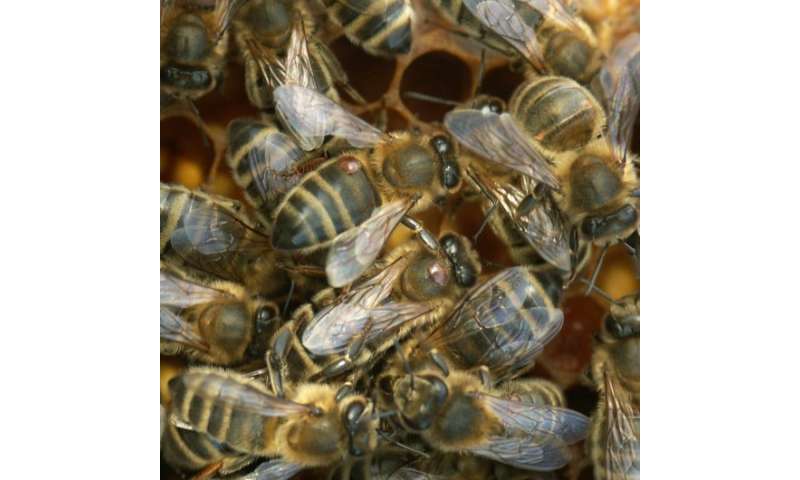Interaction between Varroa destructor and imidacloprid reduces flight capacity of honeybees

Parasitic mites Varroa destructor together with the pesticide imidacloprid hamper bees in their search for pollen. The pesticide and the bee parasite reduce the honeybees' flight capacity, causing bee colonies to weaken and possibly even collapse. This was concluded by researchers from Wageningen University & Research Centre in their article in Proceedings of the Royal Society B.
Honeybees fly shorter distances when they originate from colonies with many Varroa mites, the researchers note. The distances they travel are even smaller when those colonies were also exposed to the chemical pesticide imidacloprid in a dose that bees may encounter in the field. The effect of the Varroa mite was found to be larger than that of imidacloprid, but the pesticide increases the negative effect of the parasite.
Colony losses
The study shows that the ability of the colony to collect food may be hampered due to imidacloprid in combination with the parasitic mite Varroa destructor. When this effect lasts long enough, it may lead to weakening and ultimately collapse of the colony.
The role of the Varroa mite in winter mortality of bee colonies is well known among beekeepers. A heated debate has been going on for several years already about the role of neonicotinoid pesticides, like imidacloprid. In previous studies on the effects of these pesticides on honeybees, often individual bees were exposed to relatively high doses of the pesticide. In this study, however, entire bee colonies were exposed to both the Varroa mite and imidacloprid for several months.
Flight mill
The researchers used pollen foraging bees for the experiment. These were caught when returning to their colony with pollen on their hind legs. From this, the researchers deduced that these bees had fetched pollen at least once successfully. Because 'very sick' bees probably not even become a foraging bee, this means that the researchers rather underestimated than overestimated the impact of the Varroa mite and imidacloprid on individual bees in these colonies.
The flight capacity of the bees was tested in a flight mill. Travelled distance and the speed of the bees were measured. To standardize the flight measurements, the bees were given a fixed amount of fuel in the form of sugar water beforehand.
-

Bee in flight mill. Credit: C. van Dooremalen, Wageningen UR -

Varroa mites (chesnut) on bees' back. Credit: Cornelissen, Wageningen UR
More information: Lisa J. Blanken et al. Interaction between and imidacloprid reduces flight capacity of honeybees , Proceedings of the Royal Society B: Biological Sciences (2015). DOI: 10.1098/rspb.2015.1738
Journal information: Proceedings of the Royal Society B
Provided by Wageningen University



















